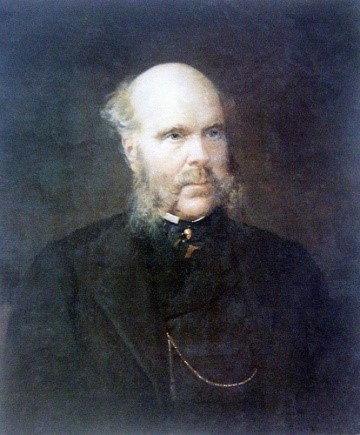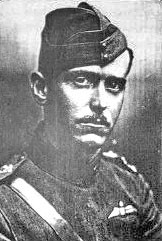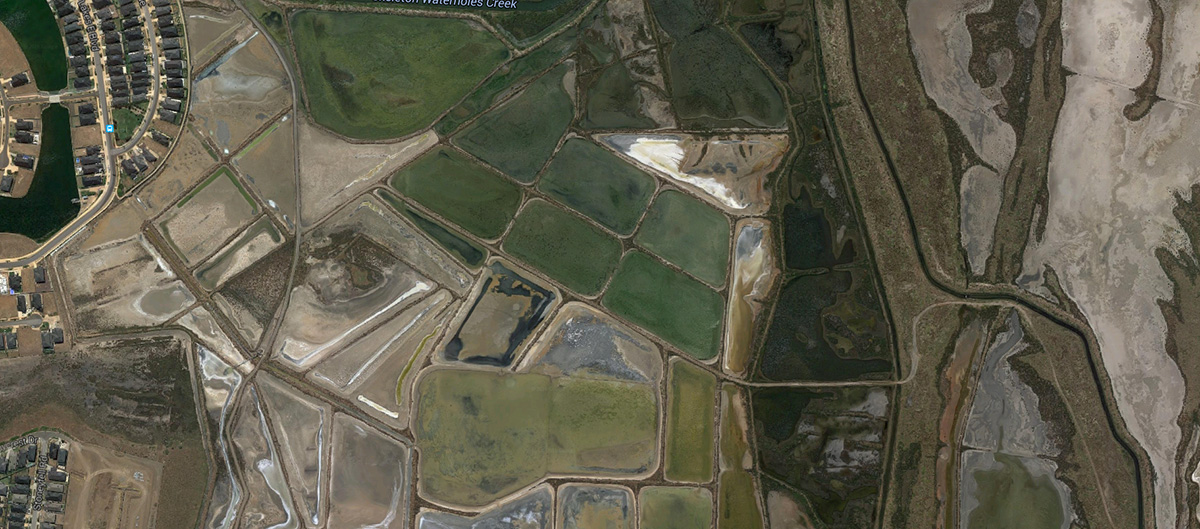Tom Parkinson's monthly column, introducing the diverse range of flora and fauna on show at Sanctuary Lakes.
One hundred and twenty five years ago, at the turn of the 19th to the 20th century, the Sanctuary Lakes land was part of the great Chirnside Family's pastoral estate. The vast landscape of the Great Western Basalt Plains had disappeared. Gone were the Kangaroos and Wallabies, replaced by grazing Sheep, Cows and for sport Red Deer, Foxes, Hares, Rabbits and Pheasants. The Cattle and Sheep's fodder grasses had taken over where native tussock grasses, flowering plants, tubers and copses of acacias and eucalyptus trees, had once dominated the plains.
 Thomas Chirnside 1815-1887 Even though he had become one of Australia's most successful pastoralist, the Chirnside patriarch, Thomas, committed suicide in 1887. He was found dead in the garden of Werribee Park with a shotgun lying beside him. His brother Andrew Chirnside was his heir, but died three years later. Andrew’s children inherited the property, but favoured their newly developed estates around the Lilydale area. So when the Government in 1910 asked to purchase land to build Australia’s first air base, they eagerly accepted. Our near neighbour, the Point Cook Air Base, was opened for the Australian Flying Corp in 1912 and is the oldest continuously operating military aerodrome in the world. The Air Base had three great effects on our history. Firstly it brought non-agricultural housing around the base. Secondly the Point Cook Road (originally named Aviation Road) had to be built to service the airport. This had the effect of cutting off the eastern, seaward side of the Chirnside Pastoral estate. Thirdly in 1920, the Chirnside Family sold the remaining Point Cook land to the then Commander of Point Cook Base, Sydney Dalrymple D.F.C.
Thomas Chirnside 1815-1887 Even though he had become one of Australia's most successful pastoralist, the Chirnside patriarch, Thomas, committed suicide in 1887. He was found dead in the garden of Werribee Park with a shotgun lying beside him. His brother Andrew Chirnside was his heir, but died three years later. Andrew’s children inherited the property, but favoured their newly developed estates around the Lilydale area. So when the Government in 1910 asked to purchase land to build Australia’s first air base, they eagerly accepted. Our near neighbour, the Point Cook Air Base, was opened for the Australian Flying Corp in 1912 and is the oldest continuously operating military aerodrome in the world. The Air Base had three great effects on our history. Firstly it brought non-agricultural housing around the base. Secondly the Point Cook Road (originally named Aviation Road) had to be built to service the airport. This had the effect of cutting off the eastern, seaward side of the Chirnside Pastoral estate. Thirdly in 1920, the Chirnside Family sold the remaining Point Cook land to the then Commander of Point Cook Base, Sydney Dalrymple D.F.C.
 Sydney Dalrymple 1885-1948? Although Sydney was a gallant heroic flying ace in World War One, and awarded the Distinguish Flying Cross, it became very obvious that he was not born to be a farmer and four years later he accepted an offer for 826 hectares, the majority of his land, from the Cheetham Salt Company, thereby ushering in the third major change to our landscape.
Sydney Dalrymple 1885-1948? Although Sydney was a gallant heroic flying ace in World War One, and awarded the Distinguish Flying Cross, it became very obvious that he was not born to be a farmer and four years later he accepted an offer for 826 hectares, the majority of his land, from the Cheetham Salt Company, thereby ushering in the third major change to our landscape.
Cheetham Salt excavated a large series of shallow ponds or pans and drain networks to and from Port Phillip Bay. Sea water was fed or pumped into the pans and allowed to evaporate, leaving a dried salt which was then harvested from the floor of the ponds. This evaporative salt works system using evaporative pans and manual harvesting, was pioneered in Victoria by Richard Cheetham. The first harvest of raw salt was in 1926.
Initially the Cheetham Salt Works stretched from Point Cook Road to the shores of Port Phillip and from Skeleton Creek in the north to approximately where Sneydes Road commences in the South. Today, walking between Sanctuary Lakes and the shore of Port Phillip, over what is now called the Cheetham Wetlands, we can still see the remains of the Salt Works. Surviving are the evaporative pans, timber sluice gates, timber walled crystallizing pans, pumps and pump houses, earth channels and drains, remnants of narrow gauge tramways, workshops and refinery buildings. The variable water levels throughout the complex system are still maintained by Parks Victoria in its present role as the caretaker to the international wetland environment.
Cheetham Salt works has had significant effect on the Flora and Fauna of our location. Within a decade of the Salt Works operating, native wetland plants including Coast and Sea Berry Saltbush, the Beaded Glasswort and the Rounded Noon-flower re-established themselves, as did the Acacias and Coast Banksia trees.
Although colonial ornithologists noted that the area had large numbers of shore bird species, it wasn't until the change of landscape brought on by the Salt Works, that a noticeable invasion of shore and migratory birds targeted our strip of land. So much so, that the area and our coast line to Port Wilson became of International significance, and in 1982 was listed under the International Conference on the Conservation of Wetlands and Waterfowl – commonly referred to as the Ramsar Convention. The site was designated Ramsar status in recognition of its high value as a major habitat for waterbirds. In 1986, a census showed 201 species of waterfowl visiting the wetland over a 12 month period.

In the late 1980s, the Salt Works began to run down. Lack of investment, erratic mineral deposits, suspension of work due to flooding of the pans, cheaper methods of manufacture, all pointed to the eventual close down in the early 1990s.
The land went up for sale, but who wanted to buy a salt infested moonscape on hard basalt rock with an International agreement to preserve the habitat? Well a very successful Malaysian developer Michael Tan did.
"A developer is someone who develops something from nothing - otherwise you’re a builder" declared Michael and in 1995 he purchased his "nothing".
Michael had a vision of an up-market residential estate, 20 minutes from the city, built around a large lake and golf course. With architect Chris Honey and engineer David Hunter, they put the vision into a master plan. The fourth transformation of our landscape began.
Two keys were fortuitously turned. Firstly after long hard negotiations, Greg Norman agreed to design the golf course and secondly work had started on digging the Burnley and Domain Tunnels making available limitless rich Yarra river clay soil to cover the salt pans and lagoons.
Landscape designer Barry Murphy was brought in with the riding instructions that the landscaping was totally integral to the whole concept. The thick veins of greens from the boulevards, streets and gardens should (and does) seamlessly merge into the fairways of the golf course and the wide meandering Lake. Wherever possible, use the native flora of the Victorian Basalt plain. A great example of Murphy's landscaping is the River Gum and Acacia copse with native tussock ground cover that greets us at the entrance to the estate.
Now the team had to name the estate. The options varied from "The Point", "Lagoon", "Sandpiper Cove" and even "Swan Lake" but Michael was keen for it to reflect the Ramsar bird sanctuary on the wetland and he chose Sanctuary Lakes.
As he said, "I felt it was a sanctuary away from the city, but close to it and even closer to nature."
Now twenty years on the fourth landscape is taking shape and balancing a little closer to nature with a multitude of native and immigrant flora establishing themselves around the Estate. In turn they and the open spaces of the golf course plus our now magnificent Lake and fresh water ponds are attracting even more bird species to visit us. At last count over 290 different bird species were seen in our location. That’s 8% of the world’s bird species enjoying our neighbourhood. With that and the world’s oldest airport nearby, there must be something in the air.